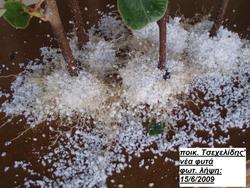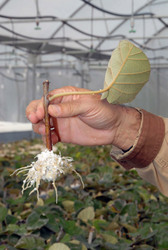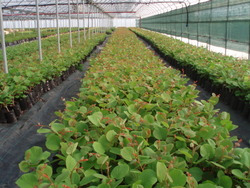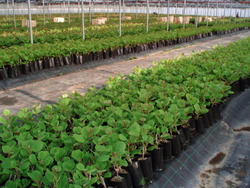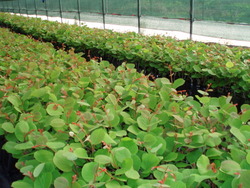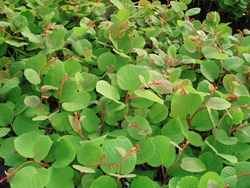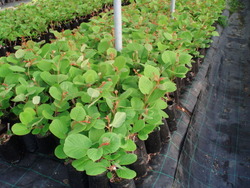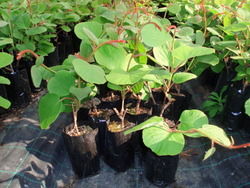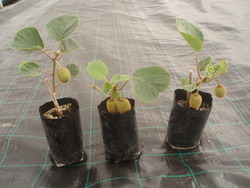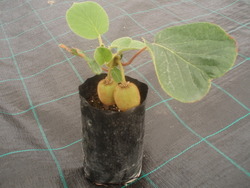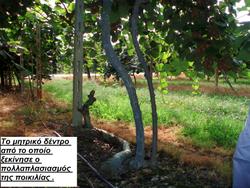
| Kiwi «TSECHELIDIS» by 'AGROHARA' | History of the kiwi variety | Kiwi and its characteristics | Information | Common questions | Contact with 'AGROHARA' |
|
History of the «TSECHELIDIS» kiwi variety
The variety is sporogenic and was created with a method used by researchers exclusively for the creation of new varieties and by many nursery gardeners for the creation of seedlings to be used in grafting cultivated varieties. The seeds used belonged to the Hayward variety. Thus, the new variety was developed from one seedling, the only one among those selected from the seedbed and transplanted to the orchard. This plant bore fruit for the first time in 1994. The characteristics of its fruit were so impressive that they immediately triggered interest for further study and follow up. Over approximately the next ten years, the variety was reproduced in the same orchard with the Hayward variety. Based on these certain observations, in December 2003 we submitted our first application to the Community Plant Variety Office, which is based in France and covers the jurisdiction of the EU as regards the examination of characteristics and the plant breeder's rights of the new variety on the inventor's initiative. The same process was then followed according to the U.P.O.V./C.P.V.O. in the countries of its jurisdiction which are interested in kiwi cultivation. In parallel with the above, the new variety's genetic identity was determined by the Agronomics School of the University of Volos (Thessalia) using molecular DNA analysis, based on the PCR-method (Polymerase Chain Reaction) through microsatellite or SSR analysis (Simple Sequence Repeats), which is regarded as the most reliable method of DNA analysis for kiwi fruit. The results of the molecular analysis supported the uncontested differences between the two genotypes (Tsechelidis and Hayward). The two genotypes are different, as they present polymorphism in at least eight (8) alleles, as shown by the methodology followed and the molecular markers used. |
|||||||||||||||||||||||||


